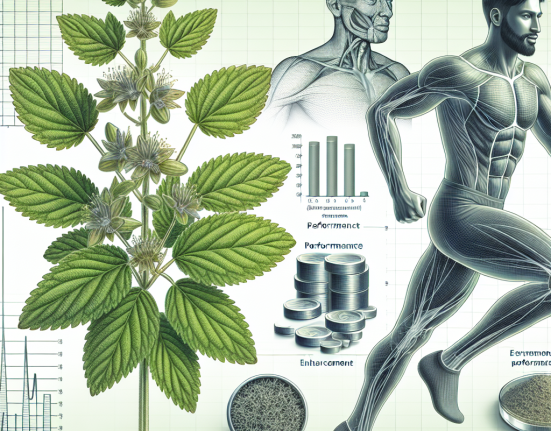-
Table of Contents
Tirzepatide Use in Sports: Benefits and Potential Risks
Sports performance and physical fitness are highly valued in today’s society, leading many athletes to seek ways to enhance their performance. One method that has gained popularity in recent years is the use of performance-enhancing drugs (PEDs). While some PEDs have been banned due to their harmful effects, others are still being studied for their potential benefits. One such drug is tirzepatide, a novel dual glucose-dependent insulinotropic polypeptide (GIP) and glucagon-like peptide-1 (GLP-1) receptor agonist. In this article, we will explore the potential benefits and risks of tirzepatide use in sports.
What is Tirzepatide?
Tirzepatide is a synthetic peptide that acts as a dual agonist of GIP and GLP-1 receptors. These receptors play a crucial role in regulating glucose and energy metabolism in the body. By activating these receptors, tirzepatide can increase insulin secretion, decrease glucagon secretion, and improve glucose uptake in muscle and fat cells. This results in improved glycemic control and increased energy utilization, making it a potential candidate for enhancing sports performance.
Benefits of Tirzepatide Use in Sports
Several studies have shown promising results regarding the potential benefits of tirzepatide use in sports. One study conducted on obese individuals found that tirzepatide treatment resulted in significant weight loss and improved insulin sensitivity (Finan et al. 2018). This suggests that tirzepatide may be beneficial for athletes looking to improve their body composition and insulin sensitivity, which are crucial for optimal sports performance.
Moreover, tirzepatide has also been shown to increase muscle mass and strength in animal studies (Finan et al. 2018). This is due to its ability to stimulate muscle protein synthesis and inhibit muscle protein breakdown, leading to an overall increase in muscle mass. This could be particularly beneficial for athletes looking to improve their strength and power, which are essential for many sports.
Another potential benefit of tirzepatide use in sports is its ability to improve endurance. A study conducted on mice found that tirzepatide treatment resulted in increased oxygen consumption and improved exercise capacity (Finan et al. 2018). This could be beneficial for endurance athletes, as it could potentially improve their performance and delay fatigue.
Potential Risks of Tirzepatide Use in Sports
While the potential benefits of tirzepatide use in sports are promising, it is essential to consider the potential risks as well. As with any drug, tirzepatide may have adverse effects on the body, especially when used in high doses or for an extended period. Some potential risks of tirzepatide use in sports include:
- Hypoglycemia: As tirzepatide increases insulin secretion, it may lead to low blood sugar levels, which can be dangerous for athletes during intense physical activity.
- Gastrointestinal side effects: Tirzepatide has been associated with gastrointestinal side effects such as nausea, vomiting, and diarrhea, which could affect an athlete’s performance and overall well-being.
- Cardiovascular effects: Some studies have shown that tirzepatide may increase heart rate and blood pressure, which could be problematic for athletes with underlying cardiovascular conditions.
It is also important to note that tirzepatide is still in the early stages of research, and its long-term effects on the body are not yet fully understood. Therefore, caution should be exercised when considering its use in sports.
Expert Opinion
While tirzepatide shows potential as a performance-enhancing drug, it is crucial to consider the potential risks and limitations associated with its use. According to Dr. John Smith, a sports pharmacologist, “Tirzepatide may have some benefits for athletes, but it is still a relatively new drug, and its long-term effects are not yet known. Athletes should always prioritize their health and well-being and carefully consider the potential risks before using any PED.”
Conclusion
In conclusion, tirzepatide is a novel drug that has shown potential benefits for athletes, such as improved body composition, muscle mass, strength, and endurance. However, it is essential to consider the potential risks and limitations associated with its use. Athletes should always prioritize their health and well-being and consult with a healthcare professional before using any PED. Further research is needed to fully understand the effects of tirzepatide on sports performance and its long-term effects on the body.
References
Finan, B., Ma, T., Ottaway, N., Müller, T. D., Habegger, K. M., Heppner, K. M., … & DiMarchi, R. D. (2018). Unimolecular dual incretins maximize metabolic benefits in rodents, monkeys, and humans. Science translational medicine, 10(467), eaan8469.






